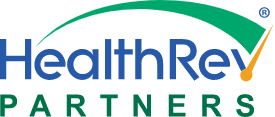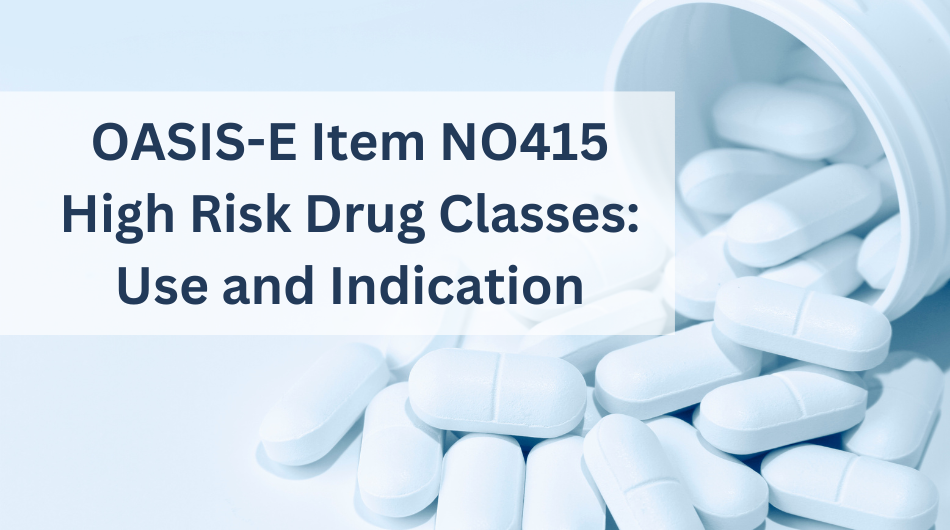There were several new items that were added to the OASIS E data set as of January 1, 2023. Many of the new items are complex, with the exception of item N0415 that addresses High Risk Drug Classes: Use and Indication. Thankfully, this item is fairly straightforward.
Looking to outsource your documentation review?
Schedule a time to learn more about our services, HERE.
What is the goal of item N0415?
The overall goal of item N0415 is to determine if a patient is taking any prescribed medications in the specified drug classes that are listed in this item, and whether there is documentation present that states why the medication was prescribed.
OASIS Medication Reconciliation
Medication reconciliation is crucial when managing a patient in the home health setting. The process of comparing a patient’s medication orders to all of the medications that a patient is taking can be complex for a clinician, so just imagine how much more difficult it may be for the patient. The reconciliation process is an effective way to help prevent medication errors such as omissions, duplications, dosing errors, and drug interactions.
Who can perform a medication reconciliation?
Many agencies have internal policies that dictate that medication reconciliation is to be performed by a Registered Nurse, but aside from agency specific policies, any skilled clinician that is permitted to perform an OASIS comprehensive assessment, can complete the medication reconciliation.
Which medications should be included?
When assessing high risk drugs, it is important to include ALL medications used by ANY route and in ANY setting while the patient is under the care of a homecare agency. This includes newly prescribed drugs that may not even be present in the patient’s home at time of assessment. Don’t forget long term meds that are only given every few weeks or monthly. Regardless of how often given, any medication that is part of the current drug regimen needs to be reconciled and considered in item N0415.
Reconciliation of medications can result in some investigation to obtain all the accurate information. A clinician can review medication records from facilities, as well as review the most recent History & Physical, Progress, Transfer, and Discharge Notes. It may even be necessary to have discussions with hospital/rehab staff, other clinicians, the patient/caregiver, or even the patient’s pharmacist to clarify information found in the above documentation.
High Risk Medication Classes to consider when scoring N0415
The drug classes that are included in item N0415 include: antipsychotics, anticoagulants, antibiotics, opioids, antiplatelets, and hypoglycemics. Drugs that do not fall into one of these six categories are captured by checking “none of the above”.
How are medications classified?
Medications are classified by how they work, what they treat, and their chemical structure, so some medications fit in more than one category. Medications that fall into more than one classification should be coded in all classifications regardless of how it is used. The same can be said for combination drugs.
Should herbal and alternative medications be included?
Although herbal and alternative medications should be included on the medication profile, these are considered to be dietary supplements and should NOT be considered on item N0415. Transdermal patches however are considered a long term medication and the appropriate pharmacological classification should be checked on N0415 if a patient has a transdermal medication such as Fentanyl, which would be scored as an opioid.
What resources are helpful to have handy?
Having a recent copy of the Nursing Drug Handbook on hand is helpful when reconciling medications and confirming what classification a medication belongs to. There are also apps available as well as websites such as Drugs.com that can assist with answering these questions. Looking up medications to obtain confirmation can prevent documentation errors such as scoring an antiplatelet as an anticoagulant in N0415.
Medication Indications
Not all medications are created equal and not all medications are used as originally intended. Clinicians should be sure to review medication profiles and MD documentation to confirm that the indication is noted for each medication prescribed that falls into one of the high-risk classes listed in N0415. Keep in mind that a patient may be taking a hypoglycemic medication for weight loss rather than for Diabetes, so it is never safe to assume an indication that isn’t documented. If a patient is taking two medications that fall under the same classification, then a check mark would be placed in column 1 of item N0415. If all of the medications that fall under a specific classification have an indication documented, then column 2 can be checked. If just one of the medications has an indication listed, and the others do not, then column 2 must be left blank. Column 2 of item N0415 is an all or nothing checkmark.


